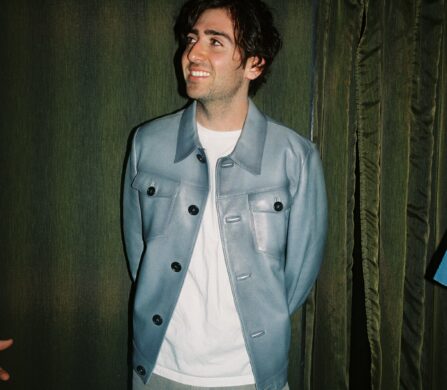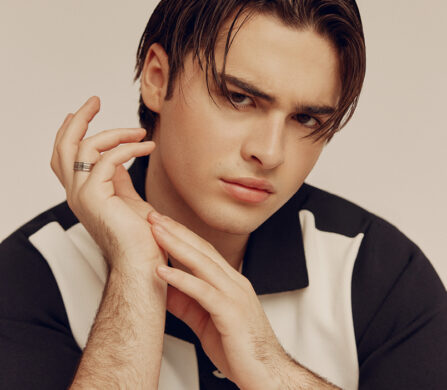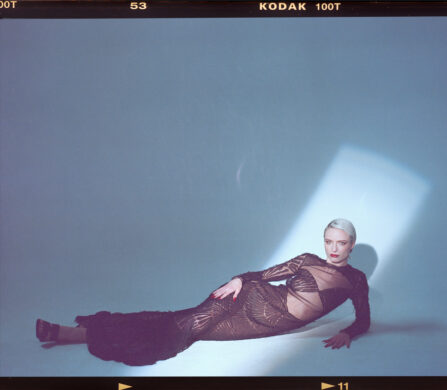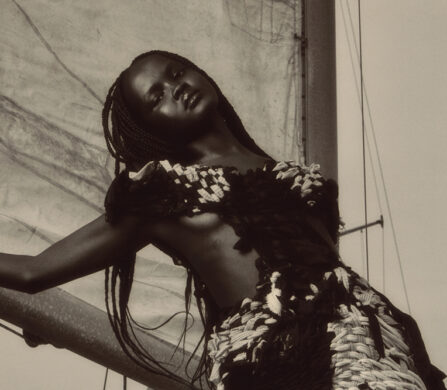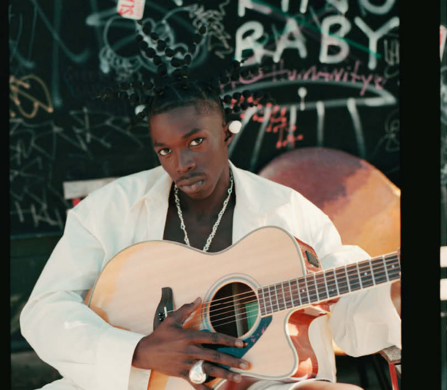
dress. Gert-Johan Coetzee
headpiece. Atelier Biser
Born from a desire to carve out a unique space within the drag cosmos, Plastique Tiara‘s journey from a whimsical notion to a symbol of empowerment encapsulates a narrative rich with passion, culture, and the pursuit of self-expression. Plastique’s creative odyssey, guided by the vibrant threads of her Asian heritage and an unyielding quest for innovation, reveals the meticulous craftsmanship behind each look and performance. This narrative unfolds against the backdrop of her migration to the United States, a pivotal chapter that intertwines with the evolution of her art, highlighting the challenges and triumphs that have shaped her path. Her reflections on the mainstreaming of drag culture and the balance between tradition and modernity in her aesthetic underscore a deep engagement with the art form’s transformative potential.
Schön! chats with Plastique about her rise as a drag performer, memorable audience experiences, and more.
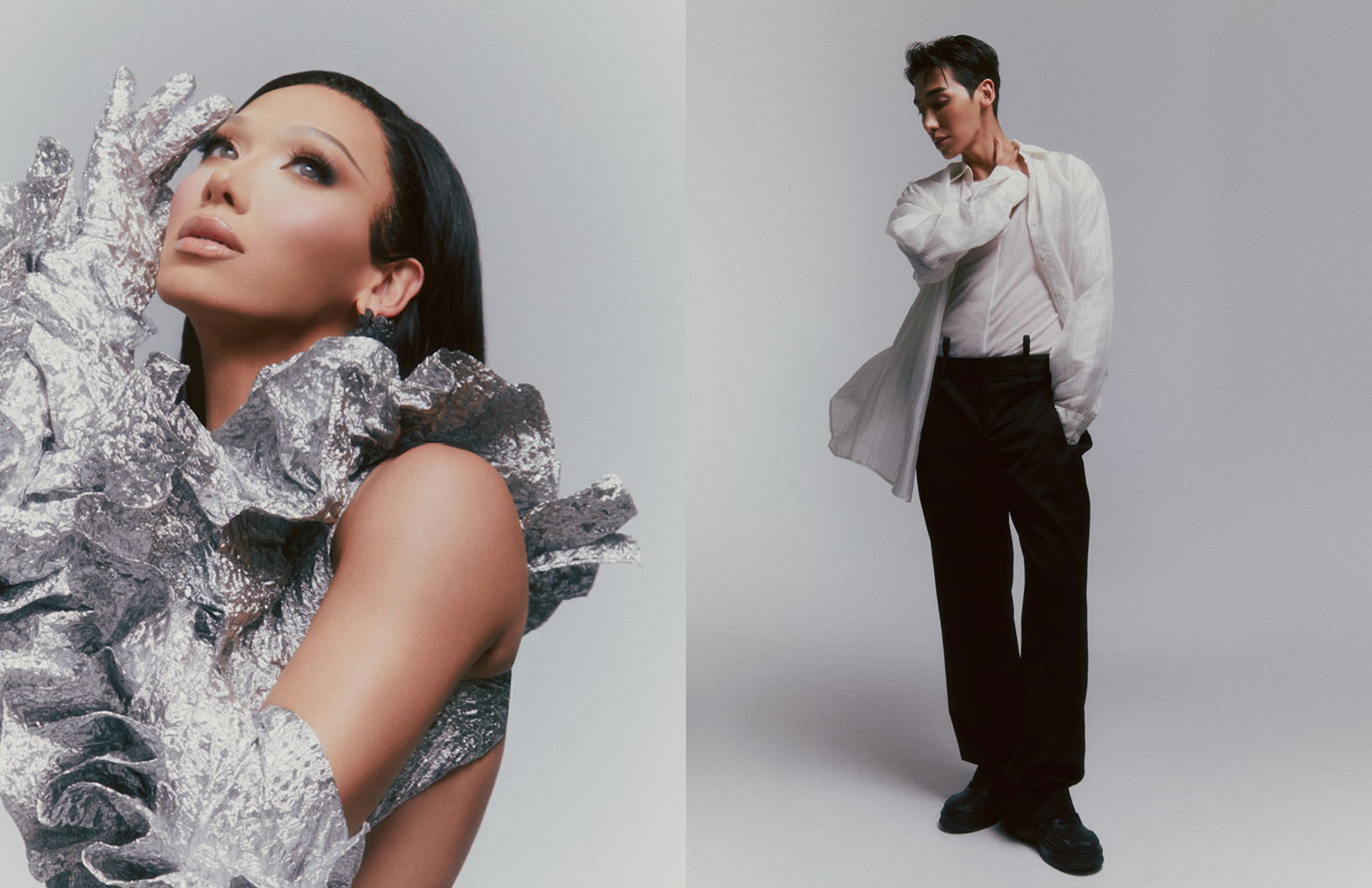
dress + gloves. Aknvas
winter sweet black earring. ZENA
opposite
organic jersey long sleep top. THEO
loose shirt + trousers with loops. BETTTER
shoes. OGR “Dragon Stride”
Can you share the story behind your stage name, Plastique Tiara, and how it reflects your persona or style as a drag performer?
The origin of my stage name, Plastique Tiara, is quite special to me. I desired a name that was unique, something not commonly used by others. At the time, “Plastic Tiara” seemed to embody a blend of whimsy and distinctiveness, fitting well with the persona I wanted to project. The name, slightly humorous yet memorable, resonated with me, so I adopted it. Initially, drag served as a form of armor for me, a way to explore and express my identity. Plastique became akin to a superhero character in my life. Over time, my personal and stage identities have intertwined, with Plastique evolving into a symbol of empowerment and creativity for me.
Walk us through your creative process. How do you conceptualize and bring to life a look or performance?
My creative process is deeply inspired by my everyday experiences, with a significant influence from Asian culture and performances. When something catches my eye, I contemplate how I can incorporate it into my work while adding a unique twist from an Asian perspective. This approach helps me in not only showcasing my culture but also in personalizing my creations, making them distinctly my own.
In what ways has your cultural background influenced your drag aesthetic and performances?
My cultural background is intricately woven into every aspect of my performances. Initially influenced by American pop culture, my journey led me to rediscover the rich and profound culture of my birthplace, Vietnam. This reconnection has deeply influenced my approach to costuming, hairstyling, and the conceptualization of my performances. Nowadays, I strive to infuse my work with as much of my cultural heritage as possible, aiming to resonate with and celebrate it through my art.
Yeah, I see. And it’s been how long you’ve been living in the States?
It’s been, I think, 16 years now, I’m 27 this year, and I moved when I was 11 from Vietnam.

dress. Gert-Johan Coetzee
headpiece. Atelier Biser
opposite
jacket. BETTTER
double layer pearl necklace. Lost In Echo
Drag is an art that often involves overcoming challenges. Could you tell us about a significant challenge you’ve faced in your career and how you overcame it?
Every drag performer faces challenges, especially at the outset when the pursuit is purely for the love of drag rather than fame. Initially, I performed primarily for tips, which barely sustained me financially. However, the passion for living my drag dream outweighed these financial struggles. The support and understanding of my family were crucial as we navigated these challenges together. Post-Drag Race, the perception of drag evolved within my family and society; it became recognized as a legitimate art form and a movement that provides inspiration to many. The growing acceptance and popularity of drag in Vietnam have validated my journey, transforming it into something larger than just personal ambition.
How do you feel about the mainstreaming of drag culture? Do you think it has changed the essence of what drag means?
I wholeheartedly embrace the mainstreaming of drag culture. Its recognition as a legitimate art form is a testament to its evolving appreciation and understanding. Drag artists are now celebrated across various platforms, from television and film to fashion runways and prestigious events like the Met Gala. This broader exposure is not just beneficial for the artists; it enriches the cultural landscape by showcasing the diversity and creativity inherent in drag. In my view, the essence of drag remains intact; its mainstreaming has simply expanded the stage, allowing for greater expression and appreciation.
Your looks are iconic. How do you balance traditional drag elements with modern fashion trends?
My approach to drag has evolved to prioritize fashion even more than before. While I always consider trends and what flatters my physique, I now focus on highlighting Asian designers and incorporating cultural elements into my looks. This not only differentiates my style from the conventional drag aesthetic but also enriches it with deeper cultural context and significance.
Can you share a memorable experience you’ve had with a fan or an audience member that has stayed with you?
A recent trip to Vietnam brought a profound and touching experience. Being recognized and appreciated by fans in my homeland for bringing Vietnamese drag to the global stage was incredibly moving. This acknowledgment helped me realize the impact of my work beyond personal achievements—it has contributed to introducing and popularizing drag in Vietnam, fostering a greater understanding and acceptance of the art form.
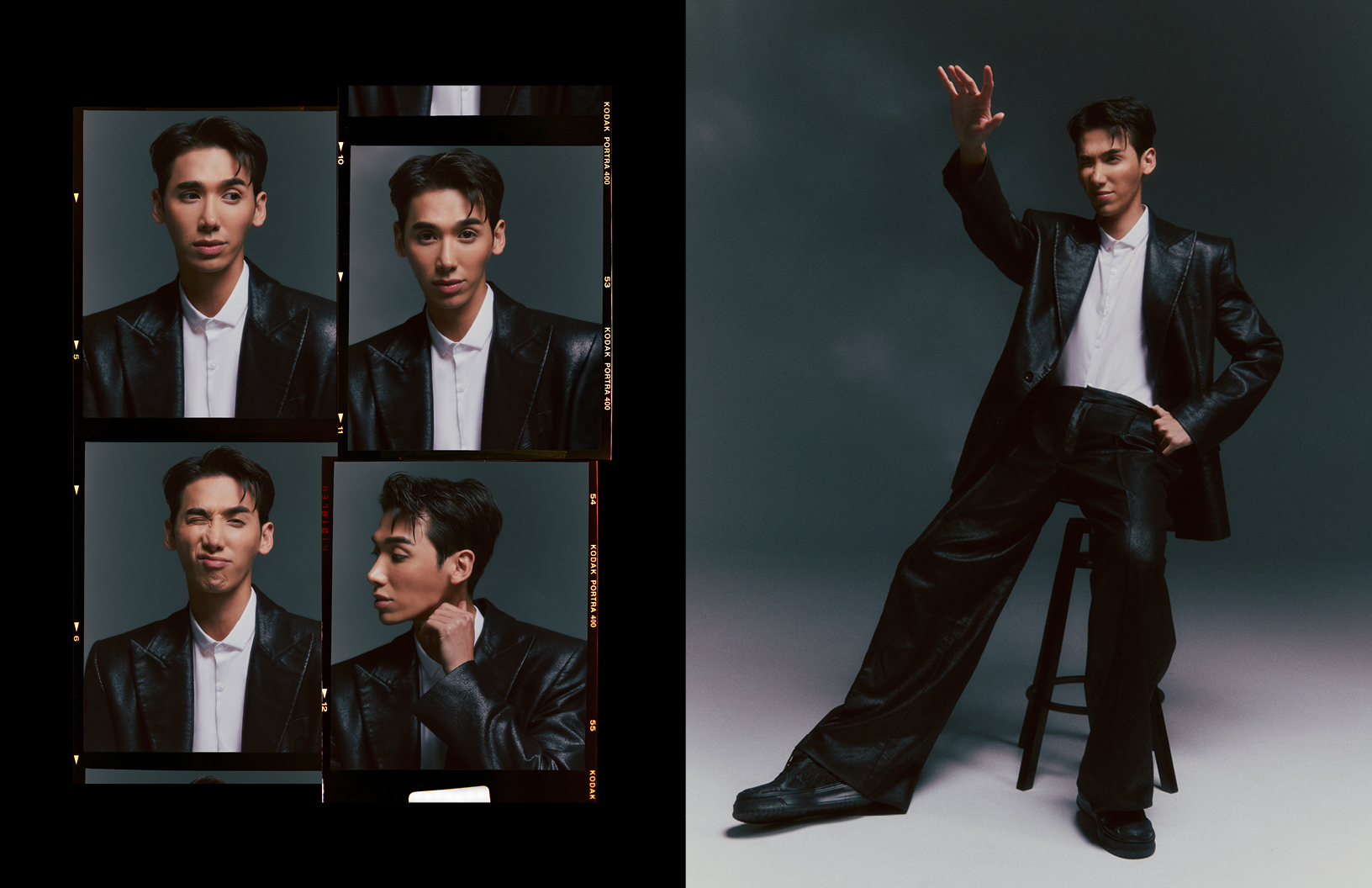
suit. Byblos
shirt. Topman
opposite
suit. Byblos
shirt. Topman
shoes. OGR “Dragon Stride
What is one aspect of being a drag performer that you think people would be surprised to learn?
Oh my goodness. One, that people would be surprised to learn. It hurts. Drag, it hurts. Drag is hard. But, you know, when you’re in it, you don’t feel anything, but after you take it off, that shit hurts.
Outside of performing, what are some passions or hobbies that you pursue?
Drag allows me to amalgamate all my hobbies—hairstyling, makeup, fashion design, and garment construction—into one expressive outlet. Outside of drag, I enjoy simpler pleasures, like unwinding with reality television, providing a stark contrast to the vibrant world of drag.
Looking ahead, what is something you haven’t done yet in your career that you aspire to achieve?
Looking forward, my aspirations extend towards achieving global recognition and creating enduring, personal contributions to the arts. At 27, the journey ahead is filled with endless possibilities and opportunities for growth and impact.
What advice would you give to aspiring drag performers who look up to you?
My advice to aspiring drag performers is to prioritize punctuality and to pursue drag out of genuine passion, not for fame. Drag is an art form that demands dedication and creativity. While fame can be elusive in this field, staying true to the essence of drag and embracing it for its artistic value will lead to fulfillment and, potentially, recognition.
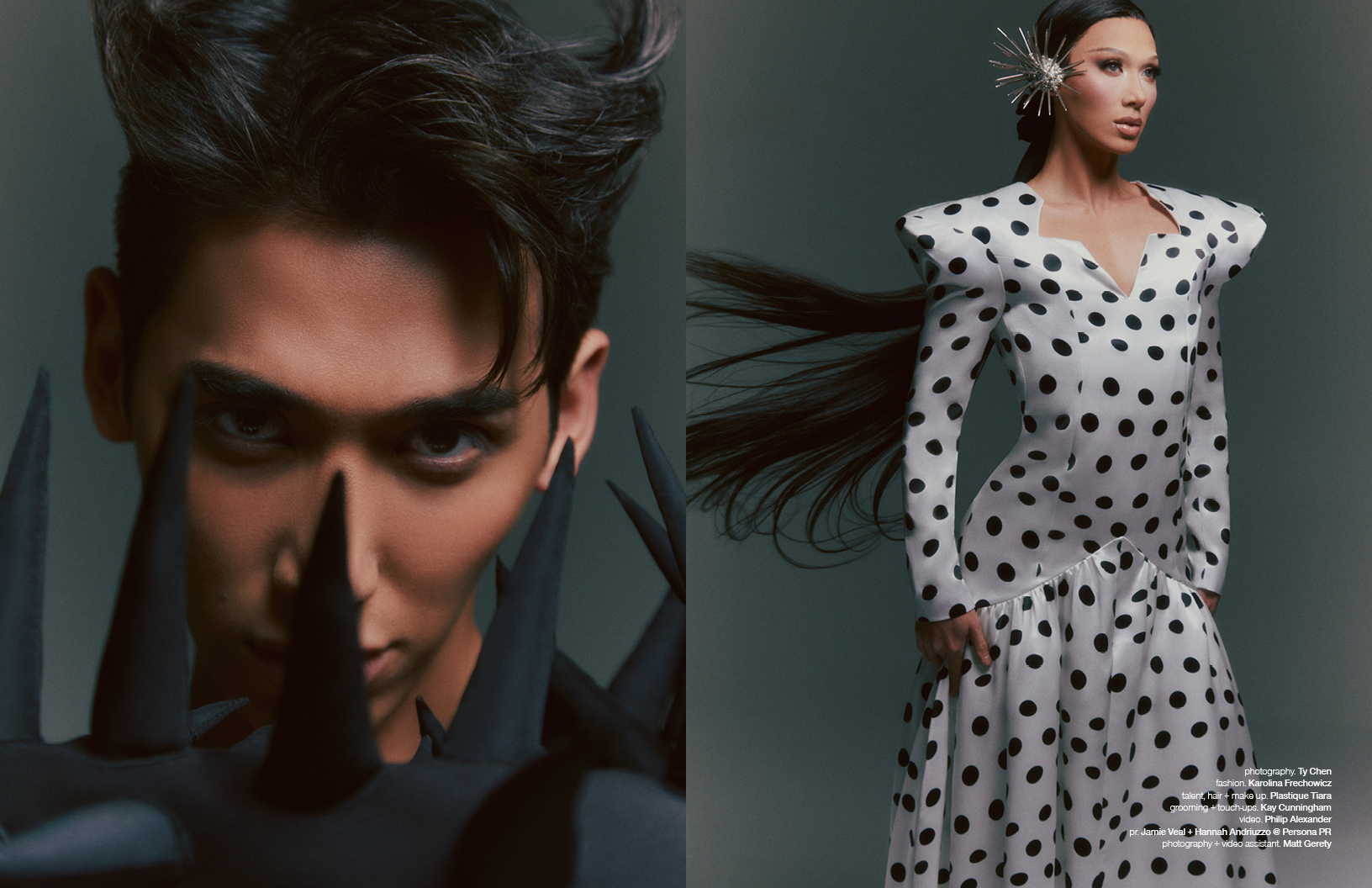
bodysuit. ANNAKIKI
opposite
dress. ANNAKIKI
headpiece. Atelier Biser
photography. Ty Chen
fashion. Karolina Frechowicz
talent, hair + make up. Plastique Tiara
grooming + touch-ups. Kay Cunningham
video. Philíp Alexander
photography + video assistant. Matt Gerety
interview. Alper Kurtel














